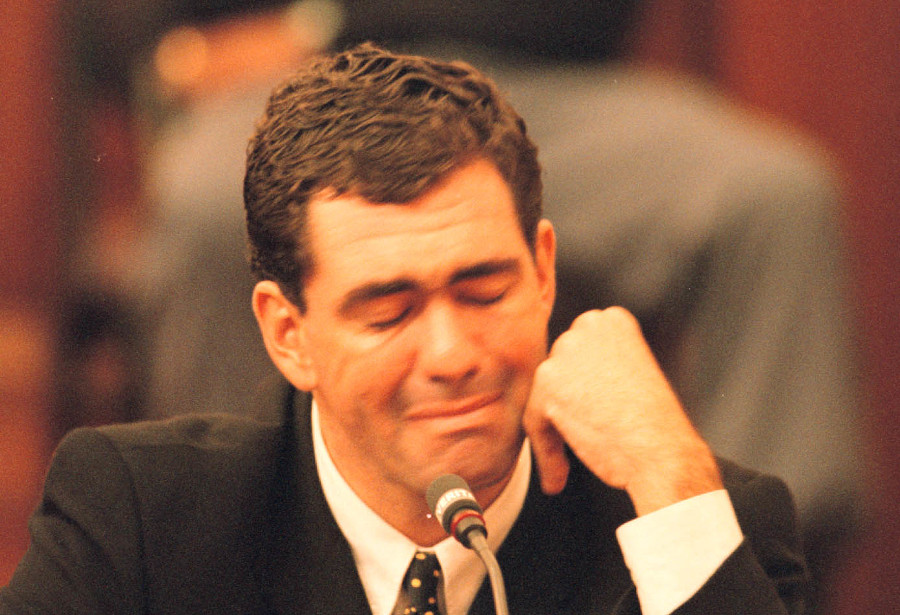Match-fixing had disappeared from cricket’s consciousness until a UAE duo were pinned for it this week. It’s a reminder that this scourge continues to be one of the game’s greatest threats.
The UAE duo Mohammed Naveed and Shaiman Anwar have both been banned for eight years from all forms of cricket after they were found guilty of match-fixing attempts at a T20 World Cup qualifying tournament.
The incidents date back to 2019 when the players were originally suspended before they were found guilty for breaching the ICC anti-corruption code.
Match-fixing – an issue South Africa has a painful association with – hasn’t, until this week, been front of mind for the vast majority of cricket fans, certainly not in the manner it had been in the late 90s and early 2000s.
The game was being crippled by it during this time, forcing the International Cricket Council (ICC) to establish the Anti-Corruption Unit, which has since implemented a strategy rooted in prevention, disruption, investigation and prosecution.
This unit’s efficacy is hard to measure, though. We only know about the successful identification of match-fixing incidents or prosecution of match-fixers or match-fixing syndicates. There is no data on those perpetrators who continue to evade detection. The scope and impact of their work could be frightening.
The unit, headed by Alex Marshall, undoubtedly do excellent work to prevent the game from being captured by these criminals. However, it would be deeply naive to assume the UAE duo’s actions aren’t being replicated without detection elsewhere in the game.
More cricket is being played than at any stage in the game’s history, with almost all major nations hosting T20 tournaments, a situation Marshall said adds a layer of complexity to their work. ‘There is enough scope for corruption in the case of a badly run T20 league and we had to change the way we work to counter this,’ he told the Times of India recently.
The expansion of these tournaments means more and more rookie or average professionals populating rosters, and this dials up the danger of corruption. Elite players only make up a small percentage of the player base in these tournaments. Financially, most of these players are either set for life or have incredible earning potential, and would therefore be less open to an approach, given how much they have to lose should they be caught. This is not the case for most players, certainly not for those playing in tournaments outside India, England and Australia.
In countries where domestic anti-corruption units (a critical part of the ICC’s fight against corruption) don’t have the resources to operate optimally – which is the case in all but the aforementioned ‘Big Three’ countries – the threat of corruption grows exponentially.
The ICC’s ACU has tried to expand their threat and reach, recently partnering with Interpol to amplify their potency by loading any finding of corruption with the threat of criminal prosecution.
Marshall also revealed in January that they are near the end of a wide-ranging investigation that led them to conclude that most match-fixing cases around the world can be linked back to 10 or 12 individuals working as bookies in India.
‘Even though at the start of an investigation those people will not feature, and there will be a new person acting as an intermediary making approach to a player, when we dig into it we will find it is one of that group of corruptors using a different name or new phone,’ Marshall told Telegraph Sport.
The ICC has also committed to publicly naming and shaming the fixers in order to curb corruption in the game. The corruptors will have their name, mugshot, and aliases uploaded on to the ICC website. This is an expansion of their deterrent and education strategy. One can even report corruption using an app that can be downloaded for iPhone or Android.
In light of all their efforts, it would be remiss not to credit the ICC for the work they’ve done in trying to counter the immense threat match-fixing poses. The game would undoubtedly be worse without the ACU and domestic ACUs.
Yet, the convictions of Naveed and Anwar reminded us that this cancer can transition from a remission phase to an active one quickly. Worse yet, it raised the very real possibility that it could be active without detection in other parts of cricket’s body.







